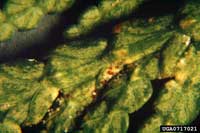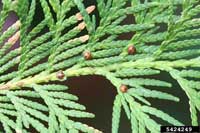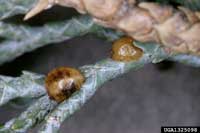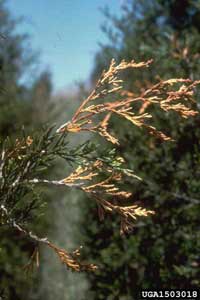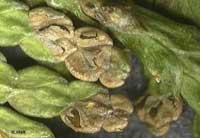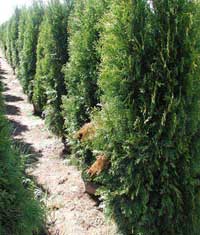Extension > Garden > Diagnose a problem > What's wrong with my plant? > Evergreen Trees and Shrubs > Arborvitae
> Patchy yellow to brown discoloration
Arborvitae > Foliage > Patchy yellow to brown discoloration
1 of 4
Spruce spider mite
Oligonychus ununguis
- Needles are mottled yellowish to reddish brown
- Silk can be found between needles
- Most common during spring and fall
- Common on arborvitae, spruce and juniper
- Mites are dark green to brown; very small, 1/50 inch long
- More information on Spruce spider mite
2 of 4
Fletcher scale
Parthenolecanium fletcheri
- Small to moderate levels of feeding usually do not result in any visible symptoms
- Heavily infested foliage turns yellow, becomes thin as needles drop prematurely
- Large amounts of honeydew are produced, often resulting in the presence of sooty mold on branches, twigs and needles
- Common on arborvitae, juniper and yew
- Small, ¼ inch long, round, brown scales at bases of needles
- More information on Fletcher scale
3 of 4
Leaf blight
Didymascella thujina
- Random sections of the foliage turn tan to reddish brown
- Small black spots appear within discolored sections of the foliage in late summer-early fall
- In severe cases lower branches may appear scorched
- Most severe on lower branches
- Most severe on densely planted trees or on trees where foliate remains wet or very humid
- More information on Leaf blight
4 of 4
Pestalotiopsis blight
Pestalotiopsis funerea
- Foliage on tips of branches turns first yellow then dark brown
- Small twigs may be killed
- Black pinpoint sized spore producing structures on infected twigs and foliage
- Common on plants stressed by winter injury, drought or other factors
- Often most severe on lower branches of the tree
- More information on Pestalotiopsis twig blight




